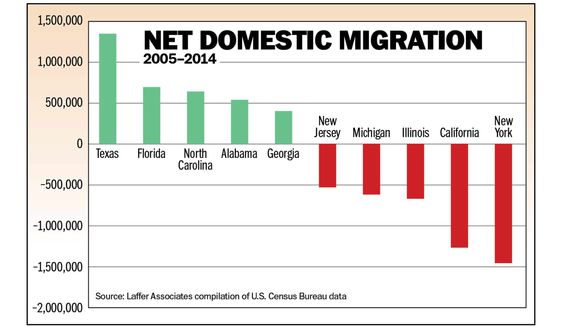Right to Work States Win Again
Stephen Moore comments on findings about economic growth in states, and finds that 5 Right to Work states beat out non-Right To work states for population growth and taxes.
In recent years, though, blue states such as California, Illinois, Delaware, Connecticut, Hawaii, Maryland and Minnesota adopted this very strategy, and they raised taxes on their wealthy residents. How did it work out? Almost all of these states lag behind the national average in growth of jobs and incomes.
So, if income redistribution policies are the solution to shrinking the gap between rich and poor, why do they fail so miserably in the states?
The blue states that try to lift up the poor with high taxes, high welfare benefits, high minimum wages and other Robin Hood policies tend to be the places where the rich end up the richest and the poor the poorest.
California is the prototypical example. It has the highest tax rates of any state. It has very generous welfare benefits. Many of its cities have a high minimum wage. But day after day, the middle class keeps leaving. The wealthy areas such as San Francisco and the Silicon Valley boom. Yet the state has nearly the highest poverty rate in the nation. The Golden State, alas, has become the inequality state.
In a new report called “Rich States, Poor States†that I write each year for the American Legislative Exchange Council with Arthur Laffer and Jonathan Williams, we find that five of the highest-tax blue states in the nation — California, New York, New Jersey, Connecticut and Illinois — lost some 4 million more U.S. residents than entered these states over the last decade (see chart). Meanwhile, the big low-tax red states — Texas, Florida, North Carolina, Arizona and Georgia — gained about this many new residents.


